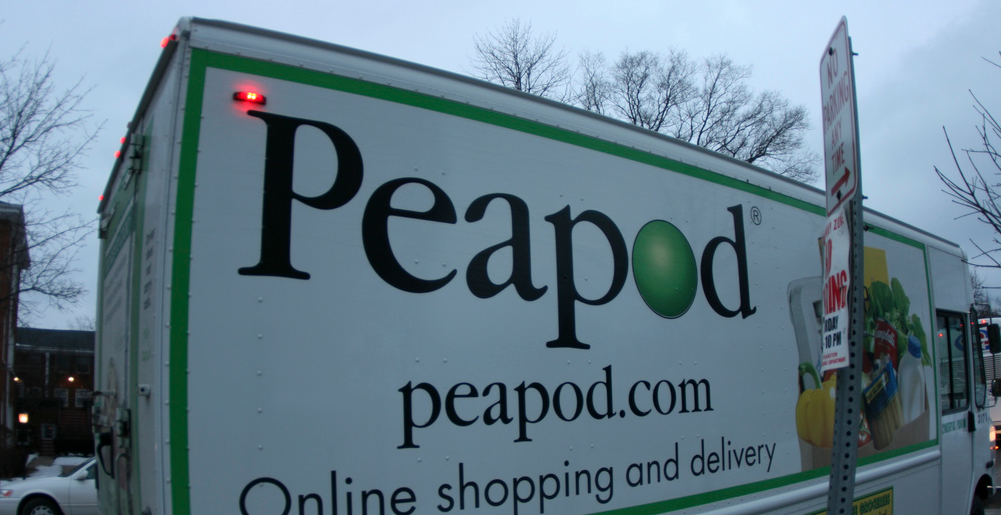9 Tips For Buying Groceries Online Without Throwing Your Money Away

(stirwise)
While it’s incredibly easy to shop around and place items into your shopping cart on sites like these, it’s just as easy to over-spend, buying all sorts of things you don’t need, won’t finish, or don’t have room for. At the same time, you’re just as likely to forget a couple of the essentials. You won’t realize until after you’ve gone through all the bags that you can’t make lasagna because you forgot to buy the tomatoes.
The biggest problem we’ve found with making the adjustment from bricks-and-mortar supermarkets to online grocery services is that we were treating the two as if they were completely different things, when the best practices for sensible shopping are mostly the same:
1. Make A List: Just like you would when you’re going to the bricks-and-mortar supermarket, be prepared with a list of everything you think you’ll need for the week to come.
2. Stick To The List: While there will be some specials that are too tempting to resist and an item or two you’d forgotten to put on the list, it’s best to stick with what you know you need rather than clicking around.
3. Don’t Just Automatically Re-Order: Some services will let you pull up previous invoices so you can quickly re-order some or all of those items. While that is incredibly convenient, it also means you aren’t comparison shopping or looking at the specials to see if there are comparable products on sale for less that week.
4. Pay Attention To The Unit Price: Comparing unit costs at the supermarket can be a pain, as many stores put the cost per pound/ounce/liter in tiny type. The online sites often make it easier to compare unit prices for similar products, so use this information to your advantage. But at the same time…
5. Be Size-Sensible: Sure, the unit price for a gallon of milk is going to be less than the unit price for a quart. But if you’re only buying milk to put into your coffee a couple times a day, that gallon might spoil before you finish it. So when buying larger/family sized products, think about whether you’ll get to enjoy those savings or if you’ll be tossing them in the trash.
Some things, like family-size packages of chicken or beef, can be frozen and saved for later. Remember not to jam an entire 5 lb. pack of ground beef into the freezer, or you’ll have to thawa out the entire thing at once just to make a meatball. It’s best to divvy up and store in portion-size bags and containers. Which reminds us, you should always…
6. Know How Much Room Is In Your Freezer: Before you buy 10 frozen pizzas because they’re on sale for $1 each, check your freezer to make sure you have the room. When the delivery driver leaves you with 20 bags of quickly thawing groceries, you don’t want to be scrambling to rearrange your ice cube trays.
Checking your freezer in advance of an online order also helps to remind you of what exactly you’ve got stowed in there. You might have some perfectly good chicken breasts that you’d forgotten about; that’s one fewer thing you won’t need to buy.
7. Be Flexible With Your Delivery Times: While most of these services offer 2-hour delivery windows, some will offer customers a discount if they are willing to accept a larger window. This may not be a possibility for you because of your work schedule, but some services offer both day and evening discounts so make sure you look into the option.
8. Know That You May Not Get Everything You Order: The biggest drawback we’ve experienced with online grocery delivery is that you don’t always get everything you order because they run out of stock. Problem is, you often don’t find this out until the day of delivery. So you need to be aware that you might not get that key ingredient to the big meal you’re planning on making. That’s why it’s a slight risk to use one of these services when you’ve got a tight deadline to host a dinner or a party (or a dinner party).
9. Remember To Figure In The Fees: If you’re looking at one of these sites to decide whether you’d benefit from getting groceries delivered, remember to calculate in any delivery fees and/or tip you might pay. At the same time, factor in a dollar value for the time you would have spent shopping. If these services come out as being more expensive after all that, then you may want to stick to the old-fashioned practice of doing your own shopping in person.
Want more consumer news? Visit our parent organization, Consumer Reports, for the latest on scams, recalls, and other consumer issues.

